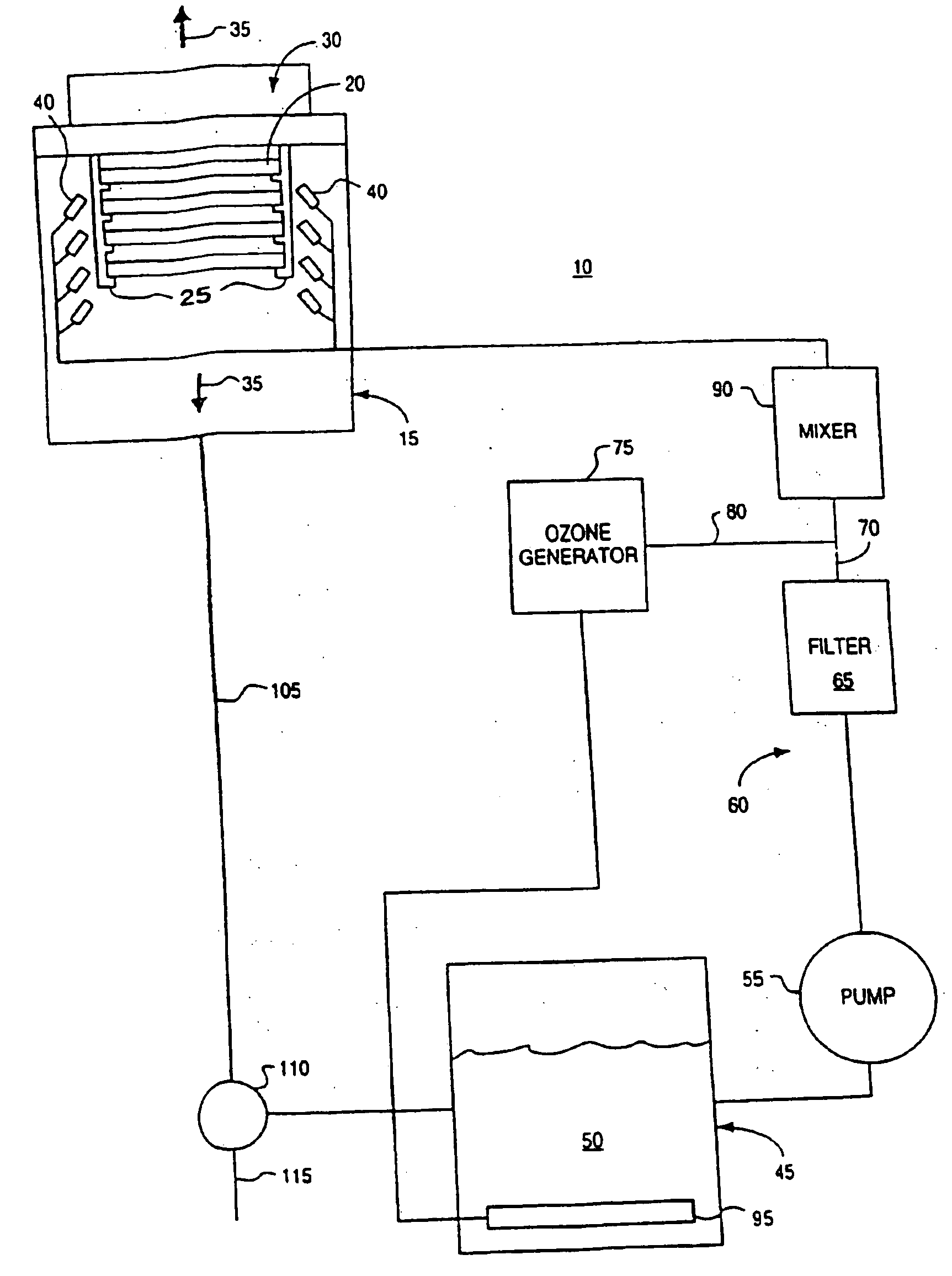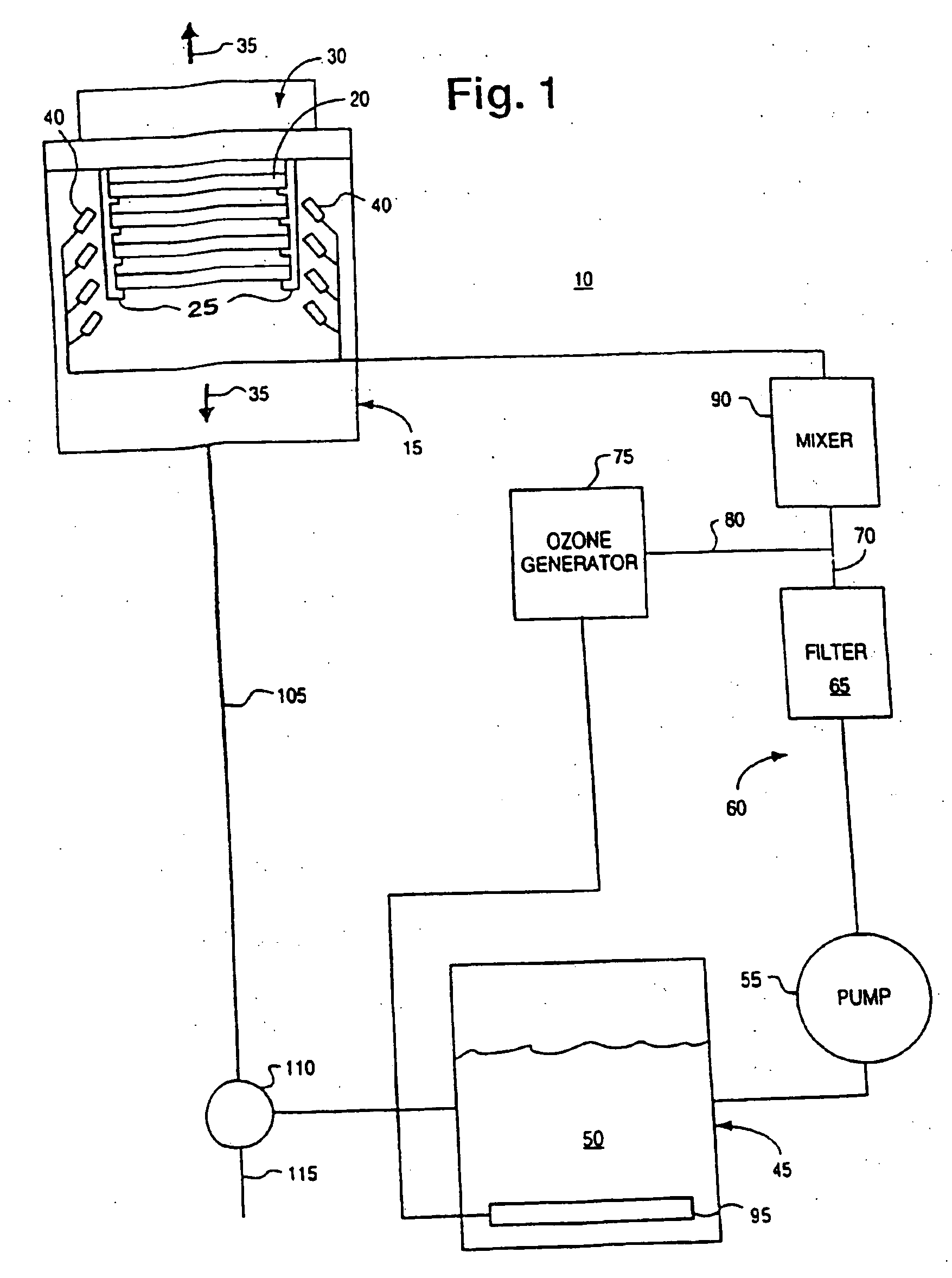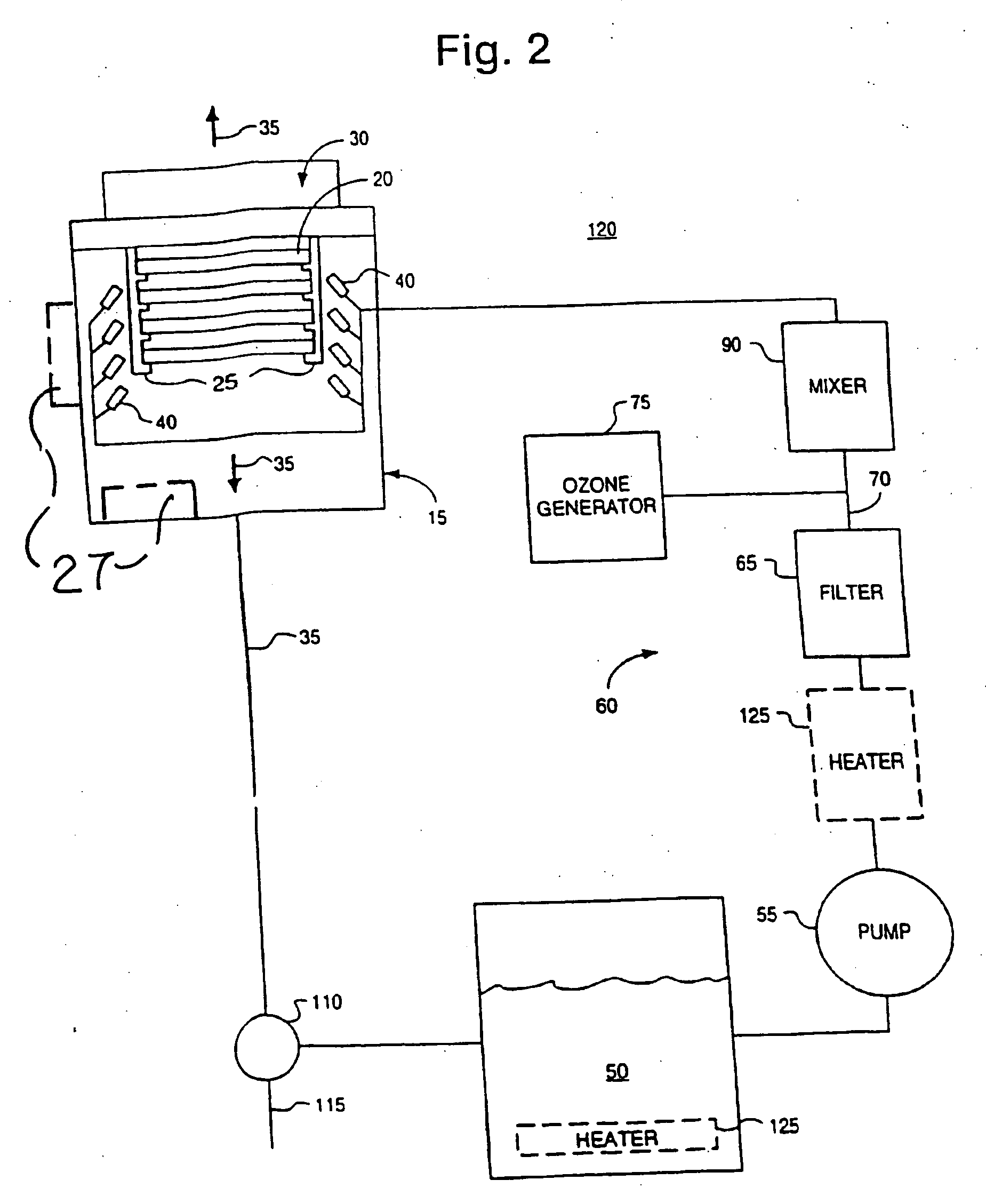Processing a workpiece using water, a base, and ozone
a technology of ozone and workpieces, applied in the direction of cleaning hollow objects, lighting and heating apparatuses, liquid cleaning, etc., can solve the problems of undesirable contaminants, accelerate the processing or cleaning chemical reactions, speed up the processing, and improve the oxidation rate of ozon
- Summary
- Abstract
- Description
- Claims
- Application Information
AI Technical Summary
Benefits of technology
Problems solved by technology
Method used
Image
Examples
Embodiment Construction
[0020] A wafer is processed or cleaned via ozone diffusing through an aqueous layer or in an aqueous vapor / gas environment, to oxidize contaminants. Additives in the aqueous layer enhance or enable the desired etching action, such as removal of films or layers including photoresist, germanium, hafnium, copper, aluminum, titanium, tungsten, nichrome, silicon dioxide, and silicon films or layers. Use of ammonium hydroxide or other bases, in the water and ozone process, allows the process to remove even very hardened photoresists. Use of bases with the water and ozone process also provides for very fast removal of photoresists from wafers having metal surfaces or features, while at room temperature, to avoid metal corrosion.
[0021] Referring to FIG. 1, a system10 includes a process chamber 15 that can hold one or more workpieces 20, such as semiconductor wafers. Although the illustrated system is primarily directed to a batch workpiece apparatus, it is readily adaptable for use in sing...
PUM
| Property | Measurement | Unit |
|---|---|---|
| temperature | aaaaa | aaaaa |
| thicknesses | aaaaa | aaaaa |
| temperatures | aaaaa | aaaaa |
Abstract
Description
Claims
Application Information
 Login to View More
Login to View More - R&D
- Intellectual Property
- Life Sciences
- Materials
- Tech Scout
- Unparalleled Data Quality
- Higher Quality Content
- 60% Fewer Hallucinations
Browse by: Latest US Patents, China's latest patents, Technical Efficacy Thesaurus, Application Domain, Technology Topic, Popular Technical Reports.
© 2025 PatSnap. All rights reserved.Legal|Privacy policy|Modern Slavery Act Transparency Statement|Sitemap|About US| Contact US: help@patsnap.com



